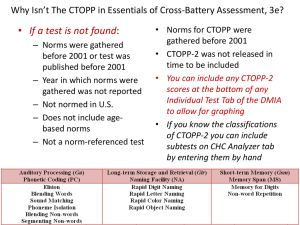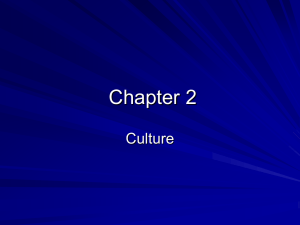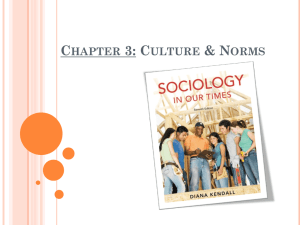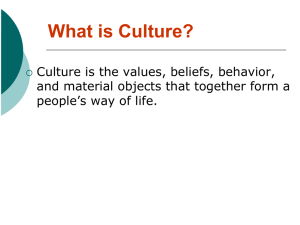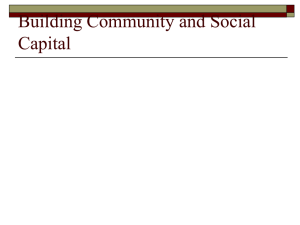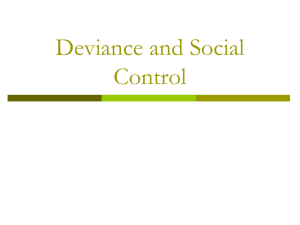Social Norms
advertisement
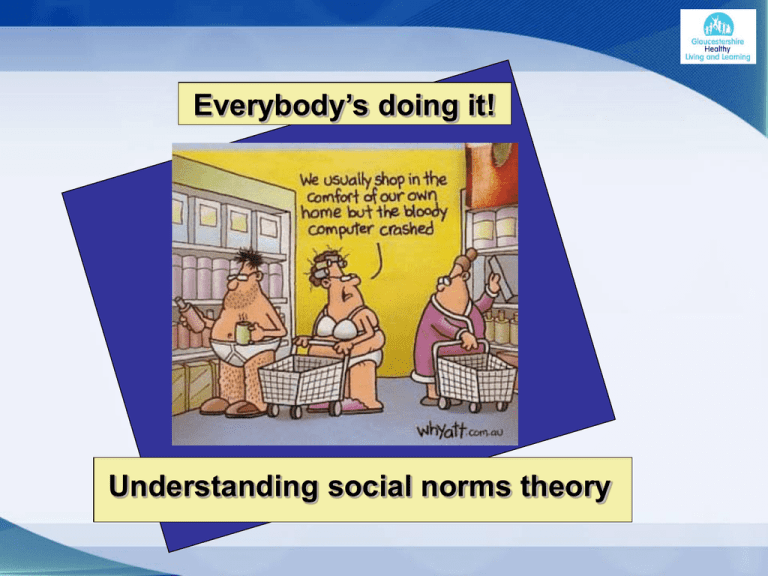
Everybody’s doing it! Understanding social norms theory What percentage of Y4s and Y6s report having never or only infrequently been bullied in the last year? • 45% • 58% • 73% What percentage of Y8s in Gloucestershire have never or not often smoked a cigarette? • 51.4% • 72.9% • 96.5% NB This has increased from 91.9% in 2006 What percentage of Y10 in Gloucestershire report being very good, good or OK at making and keeping friends? • 73.2% • 83.2% • 93.2% What percentage of Y4s and Y6s report that they try their best in school? • 68.0% • 79.1% • 90.4% What percentage of Y8 in Gloucestershire report having never or not often drunk alcohol? • 45.3% • 62.1% • 85.1% • …and over half of Year 10 (53.8%) What is the role of knowledge in shaping our decisions? “People don’t smoke for the reasons they shouldn’t smoke” Do traditional approaches to health education work? e.g. show them what it’s like to be drunk! Do traditional approaches to health education work? Teach them about responsible drinking – safe units and all that! Do traditional approaches to health education work? Tell them the risks and they won’t want to do it! Do traditional approaches to health education work? Let’s make it really scary!... Do traditional approaches to health education work? …and tell them how bad the scale of the problem is! What are social norms? Social norms theory is based on two key principles: • Humans are group oriented • We are largely influenced by and conform to peer norms Humans are group oriented But what about the perception of peer norms? But what about the perception of peer norms? The false theory: …is that peer norms influence behaviour when actually the perception of peer norms influences personal use. Types of norm Injunctive (attitudes – what people think) Descriptive (behavioural – what people do) Causes of misperception • Natural tendency to generalise observed behaviours • Cultural – entertainment, advertising, news and health advocacy media focus on the problem • We notice extremes of behaviour because they are different from the norm Spot the odd one out Spot the odd one out Spot the odd one out What’s the problem with this? The social norms model: Social norms interventions • Get the positive messages out there… In 2012 85.1% of Year 8s in Gloucestershire said they drank alcohol never or infrequently (less than once a month)* * Source: Gloucestershire Online Pupil Survey 2012 Social norms marketing – getting the positive messages out there about the behaviour of the majority of young people! Social norms marketing – getting the positive messages out there about the behaviour of the majority of young people! Does it work? The evidence Figure 8: Over time, as students’ misperceptions of drinking norms are reduced, actual drinking behaviour among students becomes more moderate www.alcoholeducationproject.org Does it work? The evidence www.alcoholeducationproject.org Does it work? The evidence www.alcoholeducationproject.org Hotel linen re-use Cards were left in hotel rooms to encourage linen re-use • Benefit to the hotel card – 16% reduction • Social responsibility card – 30% reduction • Environmental appeal card – 30% reduction • Social norms card – 44% reduction Dosage, dosage, dosage • • • • • • • postcards home, posters in toilet cubicles bumper stickers, screen savers, Covers for text books/exercise books, scrolling info across the school website notices in registers Dosage, dosage, dosage • painting on the ground, • silent numbers • figures to be used in lessons on statistics / percentages in maths lessons • messages on canteen trays, • viral texting, • School twitter accounts • Y6 – Y7 transition days When is the social norms approach most effective? • Clear positive norms messages • Credible data • Absence of competing scare messages • Dosage is high • Synergistic strategies • Broad population receives messages in addition to highrisk target groups Behaviours Social norms research has now been conducted on a range of behaviours including – • • • • • • • • • Smoking Drug use Sexual health Cancer screening Bullying Body image Recycling Driving Energy conservation Everybody’s doing it! Understanding social norms theory



